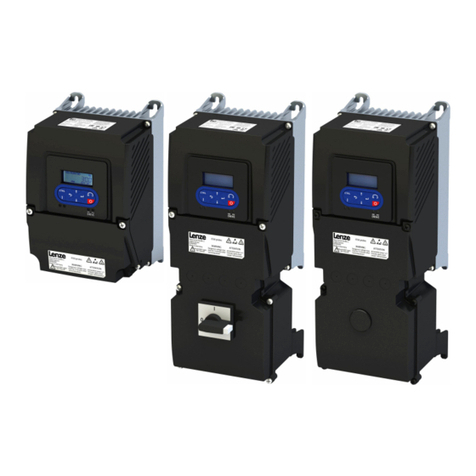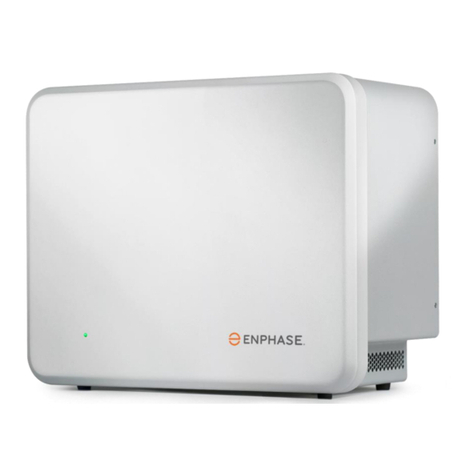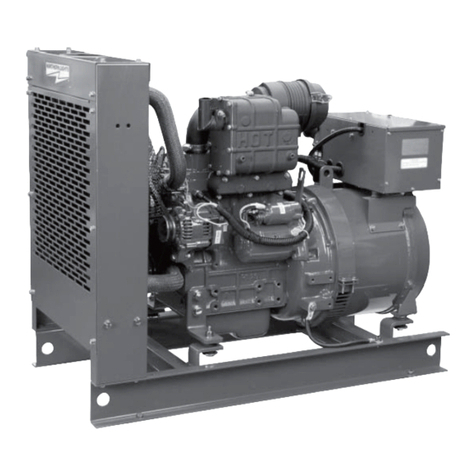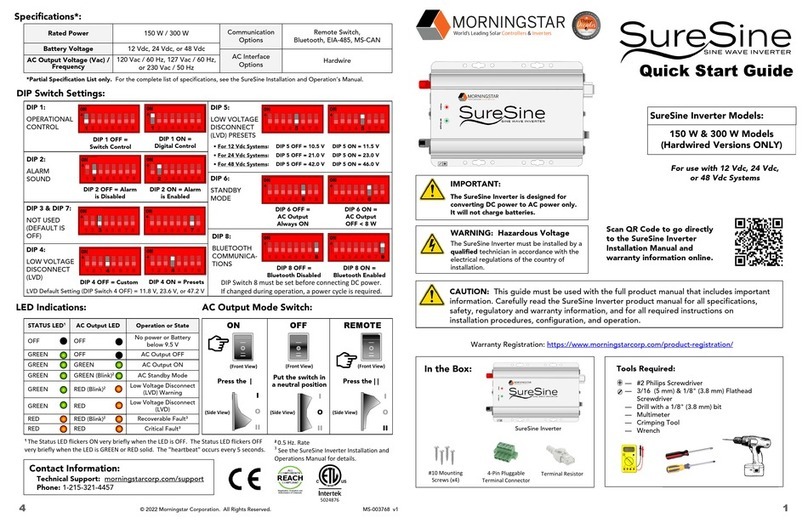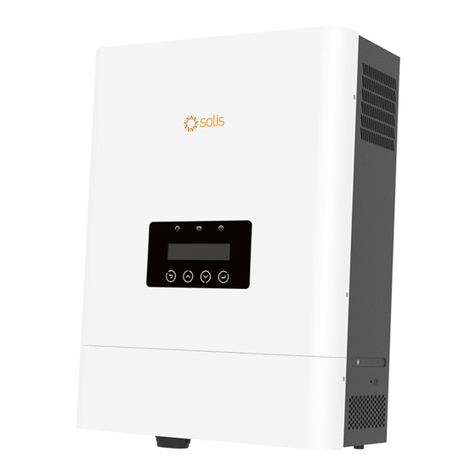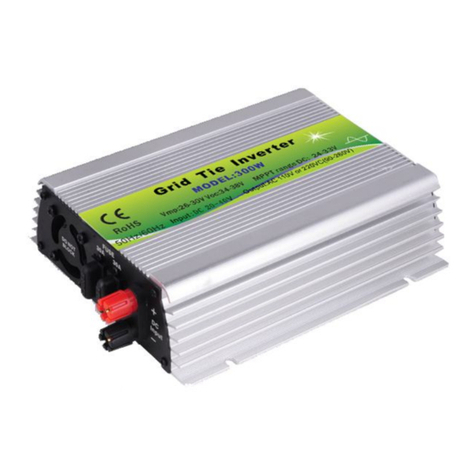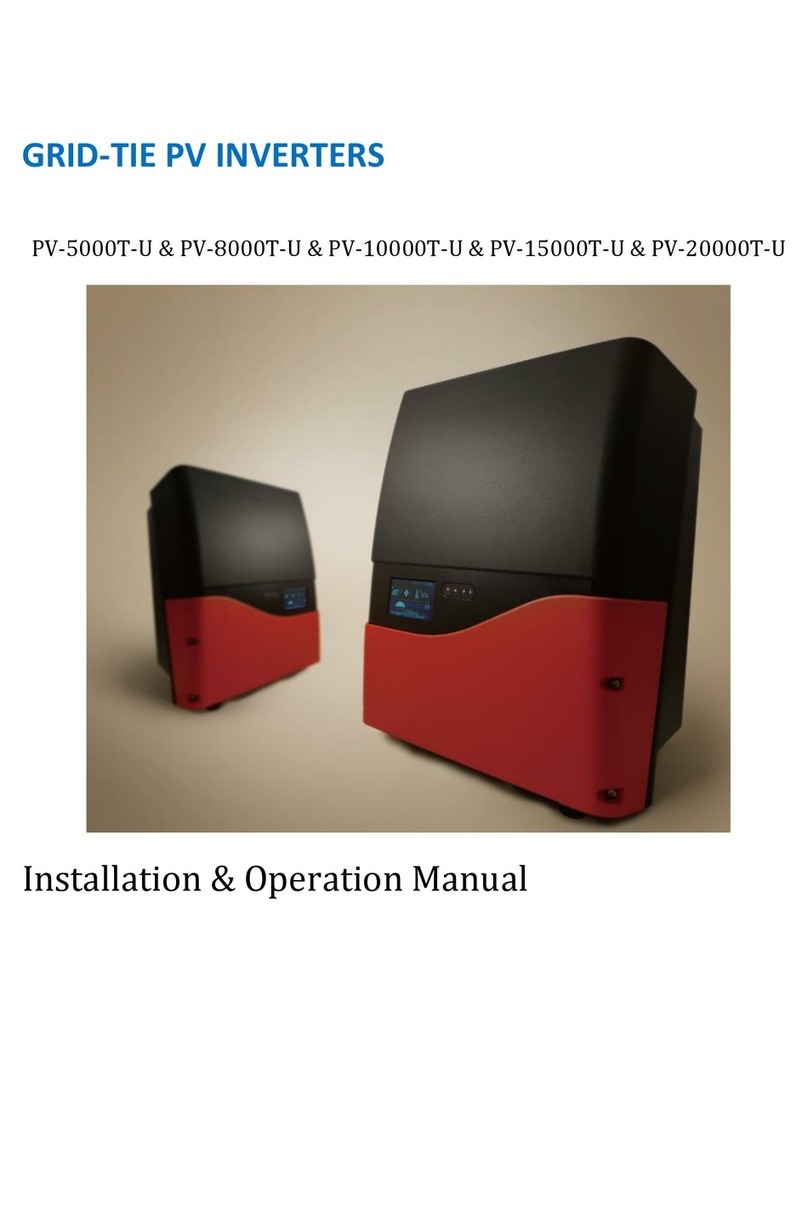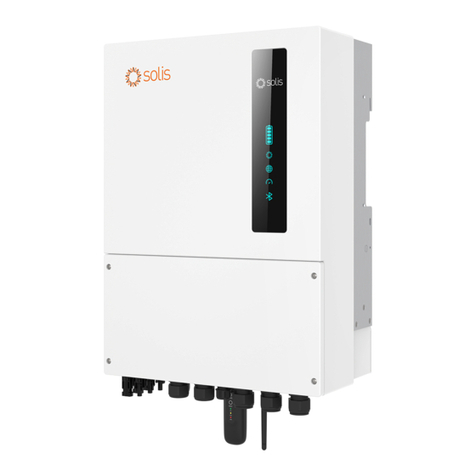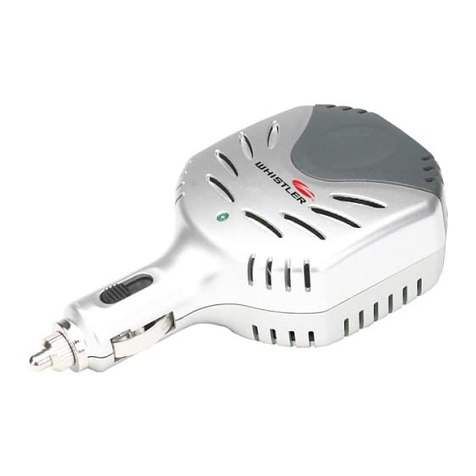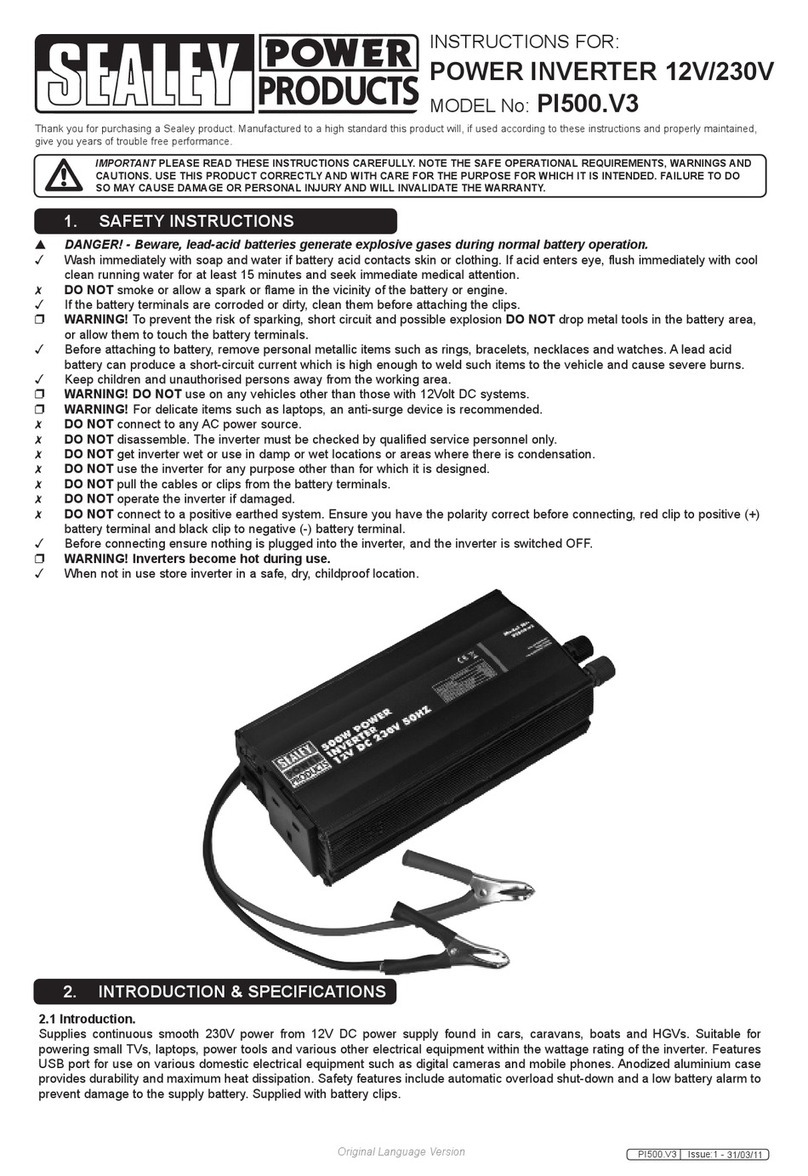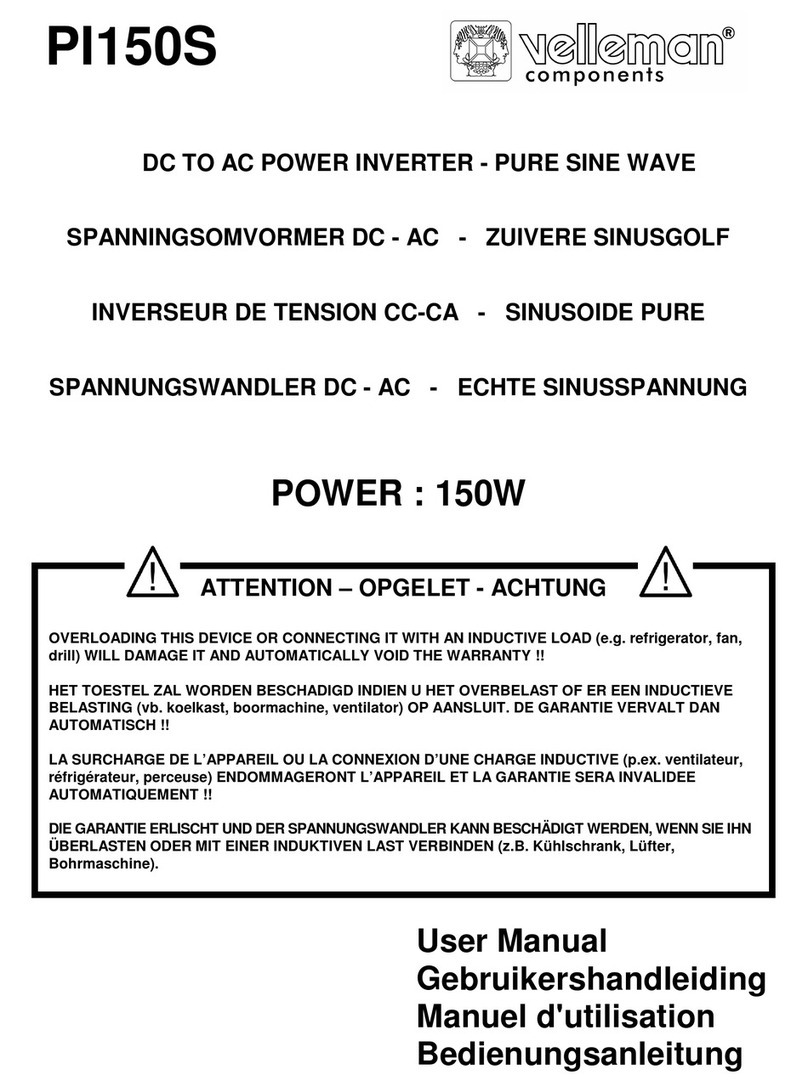DO NOT connect SR-G Grid Tie Inverters to the utility grid or
9. Completing SR-G installation map and
7. Connecting SR-G Grid Tie Power System with
6. Installing SR-G Grid Tie Inverter to sui
4. Selecting correct model of SR-G Grid Tie I
2. Choosing applicable solar panels for SR-G Grid Tie Inverter.
Installing SR-G Grid Tie Power System involves several key
8Installation Procedure
steps:
1. Considering the total capacity of the grid tie power system that you need.
3. Selecting accessory for installation of the Grid Tie Power System .
nverter.
5. Installing solar panels to suitable place.
table place.
cables and connectors.
8. Grounding the system.
Connecting the PV modules.
Each of the detailed installation steps in the following sections is numerically
referenced in the installation diagram below.
WARNING:
energize the AC circuit(s) until you have completed all of the installation
Step1. Considering the total capacity of the grid tie power system that you need.
The total capacity of the whole grid tie power system is according to your power
consumption in the site that you want to install, or how much power that you want it to feed
to the utility grid. Actually, the volume is just according to your willingness, because when
the total power of electric appliances that are being used in the installation site is larger
than the output power of the grid tie power system, these power from the system will be
consumed in the site, this will slow down the power meter, otherwise, the difference of the
output power from the system between the total used power of the appliances will feed to
the utility grid.
For example, if you want to install a grid tie power system in your house, you could decide
the total power volume according to the total power the appliances that you use in your
house, maybe the consumption of total energy in per day is about 5KWH, then you should
realize the real irradiation time in per day at your site, actually the real irradiation time is an
average result, because it will vary every day according to the climate, just assume the
time is 6 hours, so you can install a 1KW grid tie power system, with this capacity of the
system,it can supply all power consumption in whole year.
When grid tie power system is working, sometimes, there is extra power feed to utility grid
if the power from the grid tie system is larger than the power consumed by the appliances
in your house, and sometimes will not when it is not larger.
Of course, you can install 500W grid tie power system or 2KW grid tie inverter, even more
large capacity or more small capacity grid tie inverter, it doesn’t matter. But if the capacity
is too big, you should consider the volume of AC system of your house can hold the feeded
power.




















